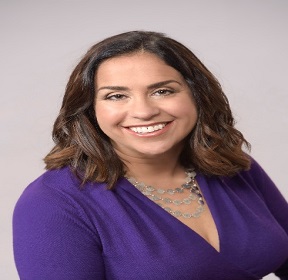
Sarah Cheyette
Princeton University and UCLA Medical School USATitle: Autism and ADHD: Similarities and Differences and Implications for Underlying Biology and Conceptualization of Neuropsychiatric Disorders
Abstract:
In recent years, there has been a move to diagnose both Autism Spectrum Disorder (ASD) and Attention Deficit Hyperactivity Disorder (ADHD) in the same individuals. But is it an accurate approach? Does it reflect biology?
As it turns out, on the basis of simple symptom categorization, there is a fair amount of overlap between these two conditions. There is a 5-10% incidence of ADHD overall in children, and a 2-5% incidence of ASD. Based on DSM-5, around 50% diagnosable with ASD could also be diagnosed with ADHD, and around 15% of children diagnosable with ADHD could also be diagnosed with ASD. Both disorders make kids appear less engaged. Inattentive behavior in ADHD may cause affected children to miss social cues, which can resemble mild ASD. ADHD kids have a higher rate of peer rejection, which can lead to them being more withdrawn, which may also resemble ASD. Children with both disorders may develop problems with empathy, as well as facial recognition.
Children with ASD and ADHD both have high rates of depression and anxiety. Impulsive behavior and executive planning issues are similarly common. Both include problems with pragmatic language and cognitive flexibility. Both are more often found in the presence of intellectual disability or more specific learning disabilities such as in language, reading or motor skills. There are genetic factors common to both disorders showing that they are not as different as previously thought.
Brain scans also reflect similarities. There is a larger total brain and white matter volume in a subset of patients with ASD, but this is not typically seen in ADHD, whereas in both disorders a smaller corpus callosum (a connection between the right and left hemispheres of the brain) has been found in some patients. In functional neuroimaging, the most consistent finding in both disorders is reduced activation of front and side brain regions (the frontal and parietal lobes).
Effective behavioral treatments for the two disorders also have some overlap: In ASD the major goal is usually to promote social skills development, whereas in ADHD the major goal is usually on managing executive tasks; but controlling impulsive behavior is often a therapeutic focus in both disorders. Many of the therapeutic techniques used in each disorder are similar. For example, the positive reinforcement of desired behaviors, achieving consistent quality sleep, engaging in regular exercise, and assembling appropriate educational support are important strategies for treating both disorders.
Medications are similar as well. As with behavioral treatment, medication management focuses on targeting specific symptom improvement. So whether your child has ASD or ADHD, if the goal is to improve attention, a medication that has been FDA-approved for attention (ADHD) may be helpful. Conversely, there are some medications that have been FDA-approved for impulsive behaviors such as aggression in ASD. Although less common, these medications may sometimes be useful for impulse control in severe ADHD.
As we discover more similarities and differences, it is likely that our whole conception of how we diagnose many neuropsychiatric disorders will change from behavioral symptomatology to underlying biology.
Biography:
Sarah Cheyette MD is a Board Certified pediatric neurologist who practices in the San Francisco Bay Area. She has written and spoken extensively on ADHD and autism including her three books on ADHD: ADHD and the Focused Mind, Winning with ADHD, and ADHD & Me. She graduated from Princeton cum laude, then UCLA medical school, finishing with her residency at Cedars Sinai and the University of Washington.Sarah Cheyette MD is a Board Certified pediatric neurologist who practices in the San Francisco Bay Area. She has written and spoken extensively on ADHD and autism including her three books on ADHD: ADHD and the Focused Mind, Winning with ADHD, and ADHD & Me. She graduated from Princeton cum laude, then UCLA medical school, finishing with her residency at Cedars Sinai and the University of Washington.
